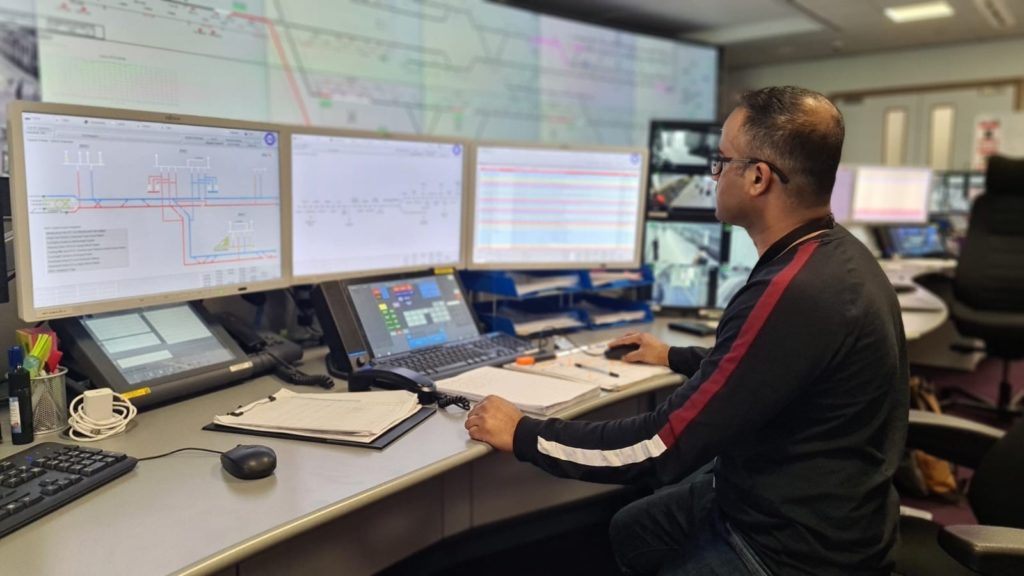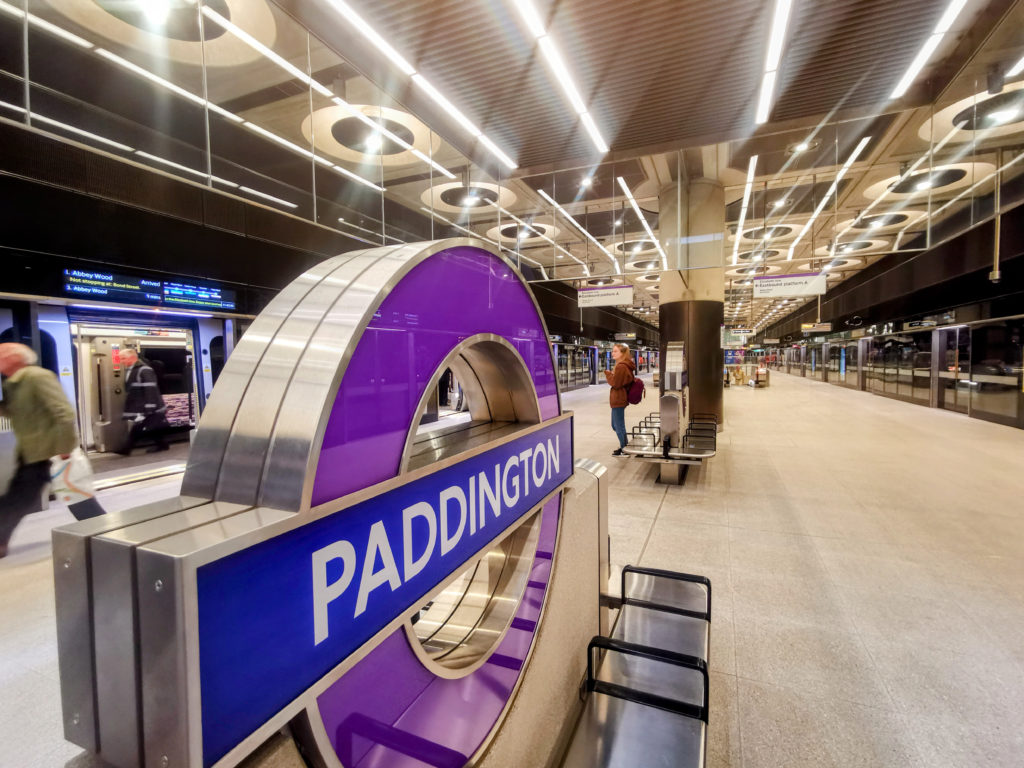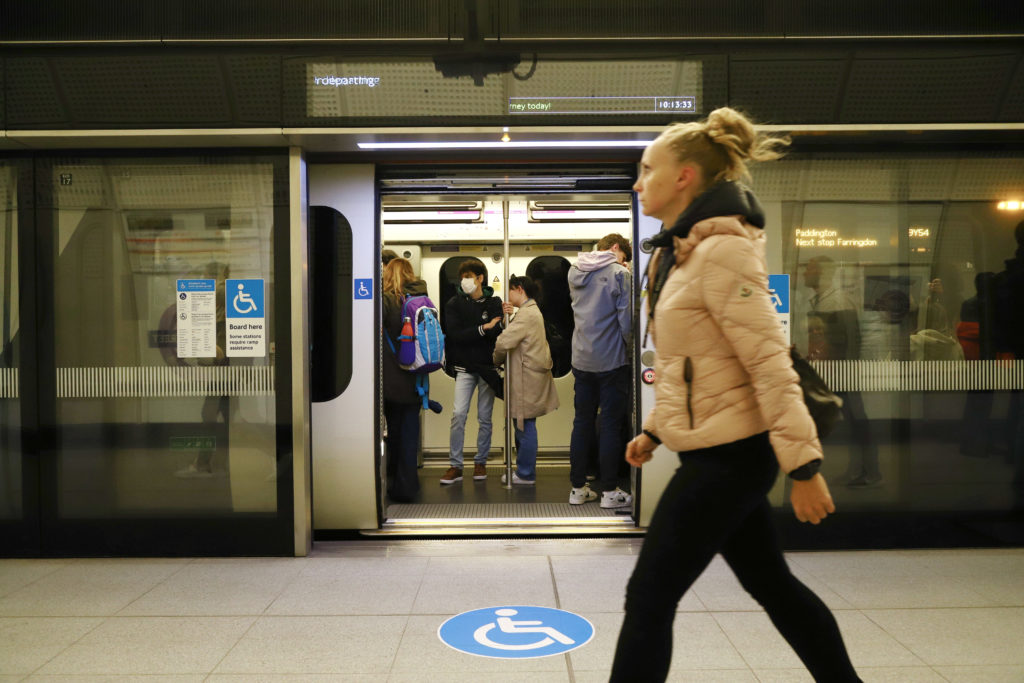The inaugural journey on the Elizabeth line saw a train operate seamlessly across three completely different signalling systems on one journey, something that’s never been done in the history of Great Britain’s rail network.
The journey went ahead without a hitch, first time.
Live testing played a part in the run up to that journey. But digital simulation at the Crossrail Integration Facility (CIF), developed by Siemens Mobility, informed everything from the design through to testing decisions that led to a faultless first day of service.
So how did digital practice make things perfect on 24 May 2022?
Safely testing design theory
Compared to a typical railway, Crossrail requires a huge number of interfaces for people and technology to connect and communicate.
It requires a complex set of trackside, control centre, and train-borne equipment each with shared and individual interfaces to a wide range of network sub-systems. These include the following:
- The control centre, which isunderpinned by Controlguide VICOS, contains more than 10 direct sub-systems, including two to the interlocking and four to the train itself.
- Trackguard Westrace (the underlying signalling technology).
- Trainguard MT communications-based train control (CBTC) system – the globally proven system used throughout the central section of the Elizabeth line.
- The signalling system on the Network rail infrastructure at the western end of the line.
- The Platform Screen doors at the new Crossrail stations, supplied by Knorr Bremse.

Whilst a lot of collaboration, systems engineering and interface design has reduced the risks associated with this, system integration has been critically important to allow smooth implementation.
To facilitate the process, Siemens Mobility has developed the CIF enabling a significant amount of off-site testing to be carried out. The facility operates ‘hand in glove’ with the company’s Braunschweig facility in Germany, where assurance cycles are run for safety-critical software before being deployed on the CIF at its UK headquarters in Chippenham.
The CIF features both real hardware and simulated versions of the signalling technologies, as well as a simulation system which creates a virtual version of the train and railway. It also features working replicas of the on-board controls and driving desk of an Elizabeth line train, complete with a screen giving a driver’s view of the railway.
This was used to test and prove the operation of many of the system interfaces in advance of their installation on the ground and their subsequent deployment. It also enabled the testing of each of the key signalling interfaces, de-risking this critical element of the programme.
Crucially, this approach allowed issues to be identified and rectified at an early stage and provided a system to support the quick turnaround of software fixes.

A platform for collaboration
As an off-site test facility, the CIF provided the team with a non-intrusive environment to test their equipment, discuss challenges, and simulate scenarios which helped to shape the solutions that were finally deployed.
Additionally, remote access to the CIF meant collaborative work could continue, despite Covid, which otherwise would have significantly delayed the delivery phase.
It also enabled partners such as Crossrail, Siemens Mobility, train builders Alstom, and platform screen door suppliers Knorr Bremse to have a credible integration environment for their equipment.
This collaborative approach led to a more efficient and robust delivery of the project.

Testing for today and tomorrow
The Elizabeth line will continue to evolve, and the CIF provides the platform for the planning and testing that’s needed before introducing upgrades.
By using two test rigs, one that replicates the live railway environment and a second that reflects future system operation based on planned updates, the team can run comparisons to understand the impact of planned changes.
This will support ongoing Elizabeth line transformations including the following:
- Stage 5B‘-‘ of the signalling programme which will be rolled out on 6 November this year, to increase capacity in the central section of up to 22 trains per hour (tph) opening the line to new customers coming to London from the east. This stage will also introduce Sunday running, heralding the introduction of a full seven-day service.
- There will be an important software upgrade which will be carried out across the whole fleet to bring the auto-reverse system into operation. As a result, trains terminating at Paddington will automatically reverse into the sidings at Westbourne Park. This will allow the driver time to walk from one end of the train to the other without having to wait in the cab, which means they can be ready to depart immediately – an important time saving in delivering the future 24 tph capacity.
Further software updates will be delivered over Christmas 2022 and Easter 2023.

Digital simulation in future projects
The Elizabeth line has shown how important digital simulation facilities such as the CIF are for getting rail transformation projects right first time.
It helps reduce on-site testing, minimising the need for disruptive access, as well as avoiding disruption to passengers.
Ultimately, digital simulation will have played a crucial role in the safe and successful delivery of 24tph operation, improved links and additional capacity, transforming travel across London and the South East.
It will also play a critical part in future rail transformation projects across all of Great Britain’s rail network.


